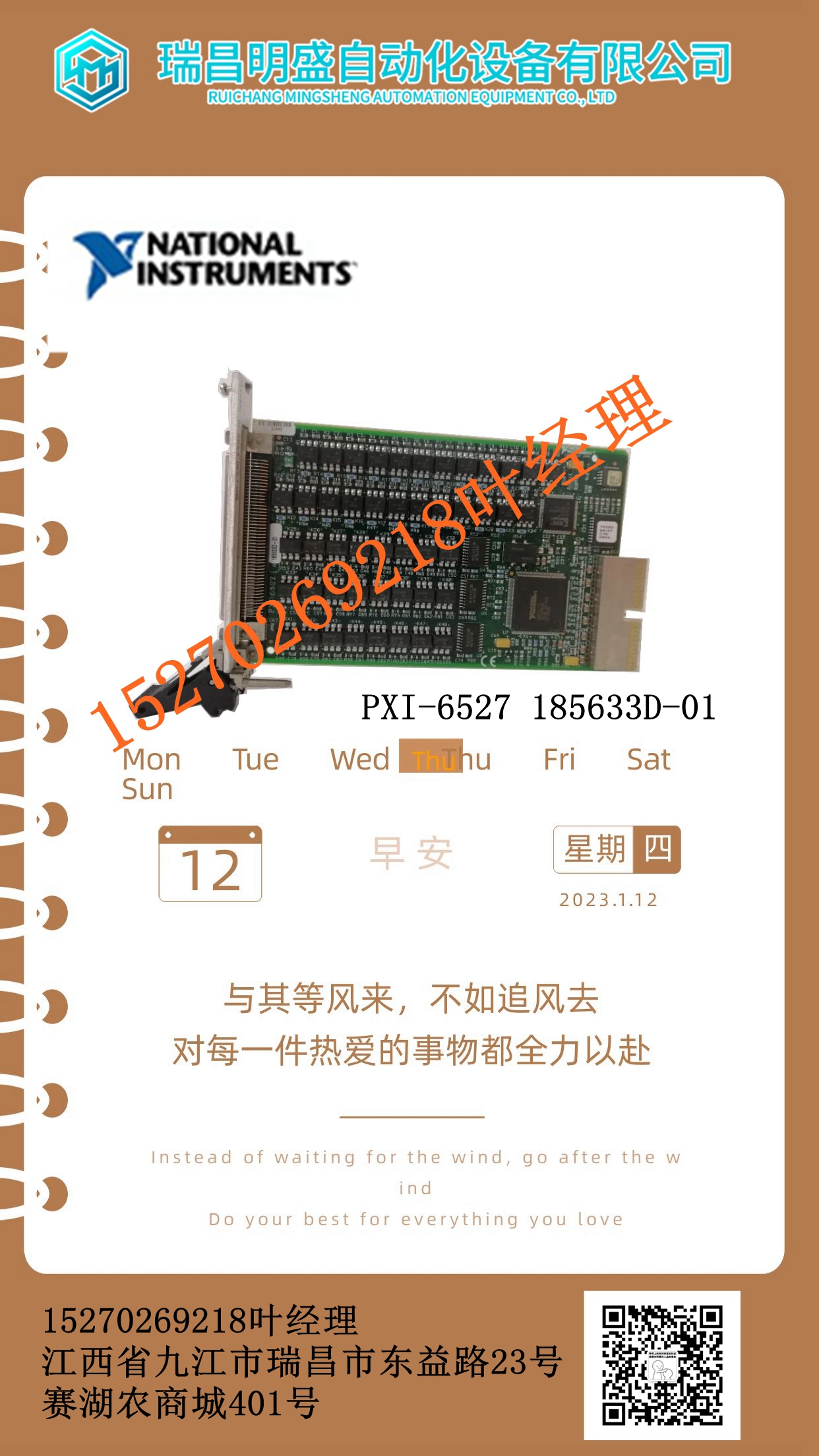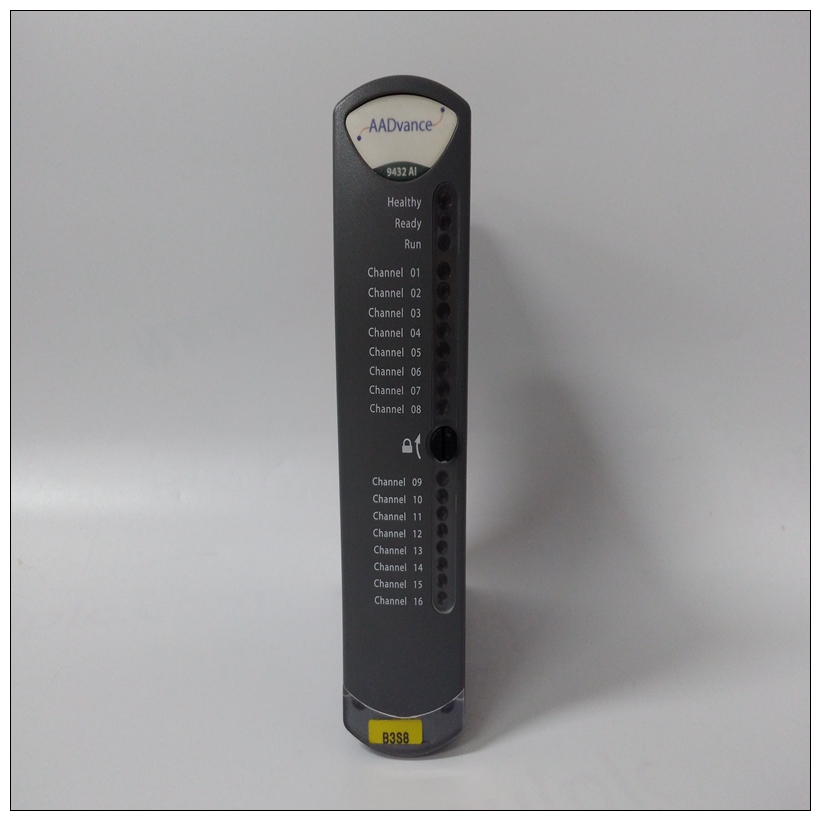ICS TRIPLEX 9110工控模塊備件
安全保護是設置點密碼功能的補充,該功能獨立運行(參見第4-6頁第4.2.1節:密碼)。b) 測試開關469投入使用后,可作為定期維護計劃的一部分不時進行測試。繼電器將積累與起動器和電機運行歷史相關的統計信息。該信息包括:上次跳閘數據、需求數據(如果使用計量功能)、MWh和Mvarh計量、RTD最大值、事件記錄、模擬輸入最小值和最大值、電機跳閘次數、類型跳閘次數、電機總運行時間、學習參數、啟動機操作次數、電機啟動次數、緊急重啟次數和數字計數器。短路469測試輸入(端子C3和C4)可防止繼電器測試時所有數據損壞或更新。測試端子短路時,在用LED將閃爍。c) 緊急重啟短路端子D17和D23將使用的熱容量放電至零,將任何啟動/小時鎖定設置為零,將啟動之間的時間鎖定設置為0,并重置所有跳閘和警報,以便熱電機可以重新啟動。然而,重新啟動塊鎖定將保持激活狀態(它可以用作后旋計時器),任何剩余的跳閘條件(如熱RTD)仍將導致跳閘。因此,當端子短路時,跳閘和閉鎖輸出繼電器將保持在正常非操作狀態。如果發生真正的緊急情況,緊急重啟端子應保持短路,直到緊急情況結束。此外,當緊急重啟端子短路時,維修警報消息指示任何激活的跳閘或阻塞。顧名思義,該功能只能在緊急情況下使用,否則會破壞繼電器的目的,即保護電機。任何從打開到關閉或從關閉到打開的緊急重啟輸入轉換都會記錄為事件。d) 遠程重置短路端子D18和D23重置任何跳閘或鎖定報警,前提是導致報警或跳閘的條件不再存在。如果有鎖定時間,塊啟動繼電器將不會復位,直到鎖定時間到期。4.4.2啟動器狀態路徑:設定值×S3數字輸入啟動器狀態所有電機都需要該輸入。當相電流低于繼電器可測量的水平(CT主電流的5%)時,469確定電機已停止。監控斷路器或接觸器的輔助觸點可防止繼電器在空載電機加載時檢測到額外啟動,或在空載電機啟動并以低于5%CT額定一次電流運行后發出閉鎖啟動。如果選擇“起動器輔助A”,則監測端子D16和D23以檢測斷路器或接觸器狀態,斷開表示斷路器或觸點斷開,短路表示閉合。
safeguard is in addition to the setpoint passcode feature, which functions independently (see Section 4.2.1: Passcode on page 4–6). b) TEST SWITCH Once the 469 is in service, it may be tested from time to time as part of a regular maintenance schedule. The relay will have accumulated statistical information relating historically to starter and motor operation. This information includes: last trip data, demand data (if the metering features are in use), MWh and Mvarh metering, RTD maximums, the event record, analog input minimums and maximums, number of motor trips, number of trips by type, total motor running hours, learned parameters, number of starter operations, number of motor starts, number of emergency restarts, and the digital counter. Shorting the 469 Test input (terminals C3 and C4) prevents all of this data from being corrupted or updated when the relay is under test. The In Service LED will flash while the test terminals are shorted. c) EMERGENCY RESTART Shorting terminals D17 and D23 discharges the thermal capacity used to zero, sets any Starts/Hour Block lockout to zero, sets any Time Between Starts Block lockout to zero, and reset all Trips and Alarms so that a hot motor may be restarted. However, a Restart Block lockout will remain active (it may be used as a backspin timer) and any trip condition that remains (such as a hot RTD) will still cause a trip. Therefore, while the terminals are shorted, the Trip and Block output relays will remain in their normal non-operated state. In the event of a real emergency, the Emergency Restart terminals should remain shorted until the emergency is over. Also, while the Emergency Restart terminals are shorted, a Service Alarm message indicates any trips or blocks that are active. As the name implies, this feature should only be used in an emergency – using it otherwise defeats the purpose of the relay, namely, protecting the motor. Any Emergency Restart input transition from open to closed or closed to open is logged as an event. d) REMOTE RESET Shorting terminals D18 and D23 resets any trips or latched alarms provided that the condition that caused the alarm or trip is no longer present. If there is a lockout time the Block Start relay will not reset until the lockout time has expired. 4.4.2 STARTER STATUS PATH: SETPOINTS ?× S3 DIGITAL INPUTS ? STARTER STATUS This input is necessary for all motors. The 469 determines that a motor has stopped when the phase current falls below the level that the relay can measure (5% of CT primary). Monitoring an auxiliary contact from the breaker or contactor prevents the relay from detecting additional starts when an unloaded motor is loaded, or issuing a block start after an unloaded motor is started and running at less than 5% CT rated primary current. If "Starter Auxiliary A" is chosen, terminals D16 and D23 are monitored to detect the breaker or contactor state, open signifying the breaker or contactor is open and shorted signifying closed.











